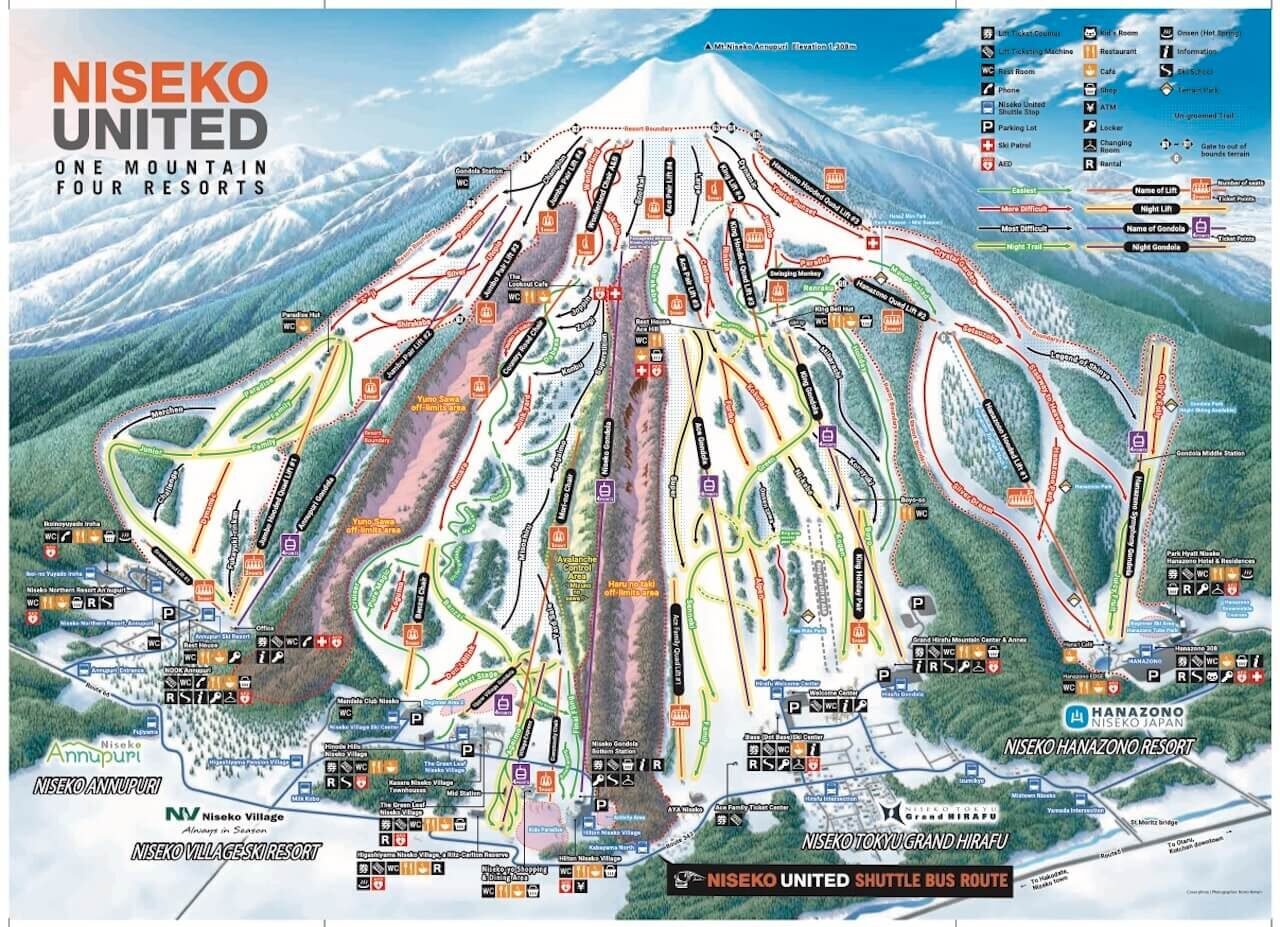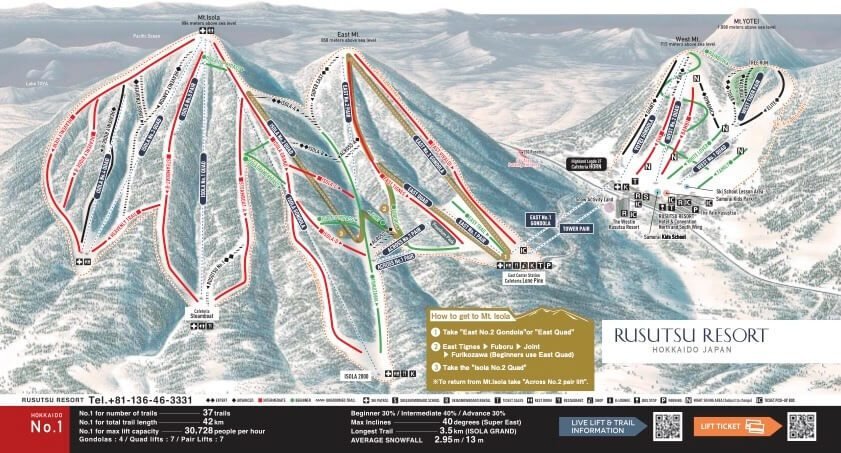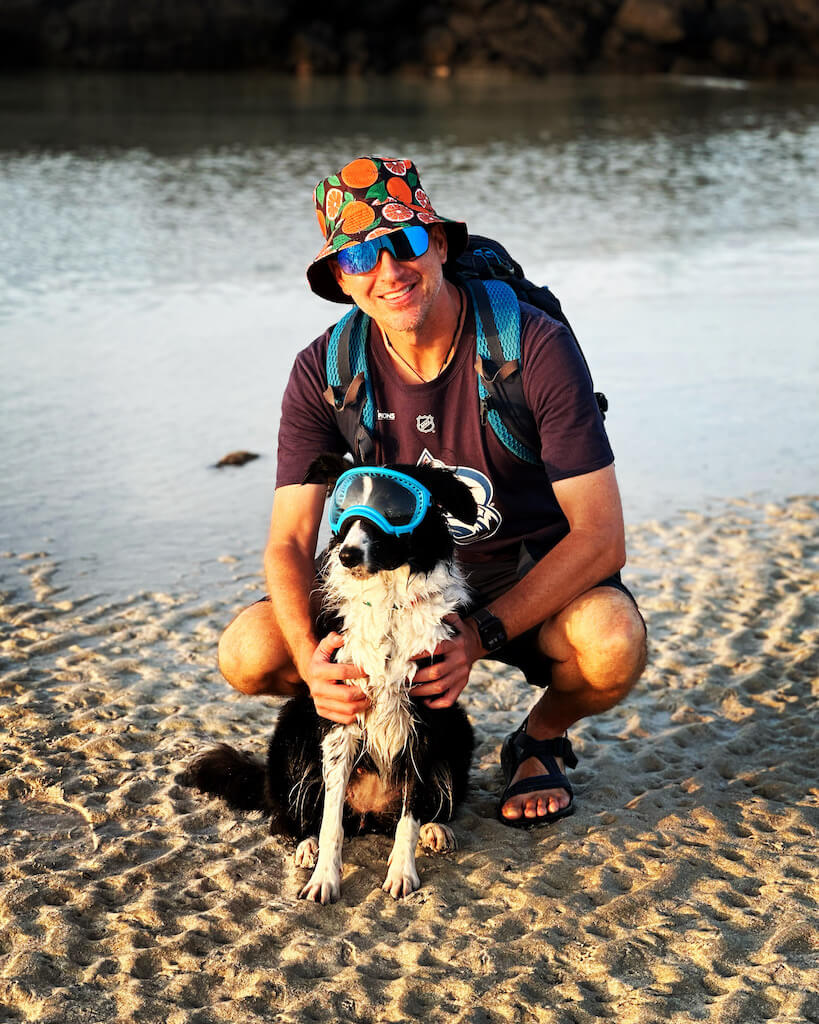Hokkaido ski trip 2025/26: This detailed guide covers everything from lift tickets and gear rentals to transportation, lodging, and powder-day strategy. Based on firsthand experience in Niseko and Rusutsu, it’s designed to help independent travelers plan smarter, save money, and chase the best snow Japan has to offer.
My first trip to Niseko was back in 2014. The Japow was deep, the crowds were chill (mostly Japanese and Aussie skiers), and I remember thinking how jealous my friends in Colorado would be.
People were genuinely surprised to see an American on the slopes. It felt like I was living out the kind of trip most skiers only read about in magazines.
Fast forward to 2025. I was back, this time with my brother and his friend, both Denver guys. The powder still delivered. But this time, the secret was out.
Niseko now feels a lot more like skiing back home in Vail or Aspen. The lift line accents, powder-day crowds, reservation-only restaurants, and ticket prices all confirmed it. Japan skiing had gone global.
Thankfully, we didn’t stop at Niseko. On this trip, I finally made it to Rusutsu, a resort I skipped in 2014. It turned out to be one of the highlights.
Rusutsu had the same premium Japow, but with fewer people and a more relaxed vibe.
If Niseko is Japan’s Vail, Rusutsu feels more like Steamboat. Still epic, just with less glitz and a slower pace. The comparison may be even more apt, as there’s even a cafeteria at the base of the Isola No. 1 Quad named Steamboat, complete with the Colorado logo on the sign. Whether there’s an official relationship or it’s just a quiet copycat, it’s on brand.
So yes, I still recommend skiing in Japan, especially Hokkaido. But a lot has changed since my earlier visits in 2009 (Hakuba Valley) and 2014.
Quick heads up: This post may contain affiliate links to gear, hotels, flights, or experiences I’ve used — or genuinely recommend. If you book through one, I may earn a commission at no extra cost to you. Full disclosure here.
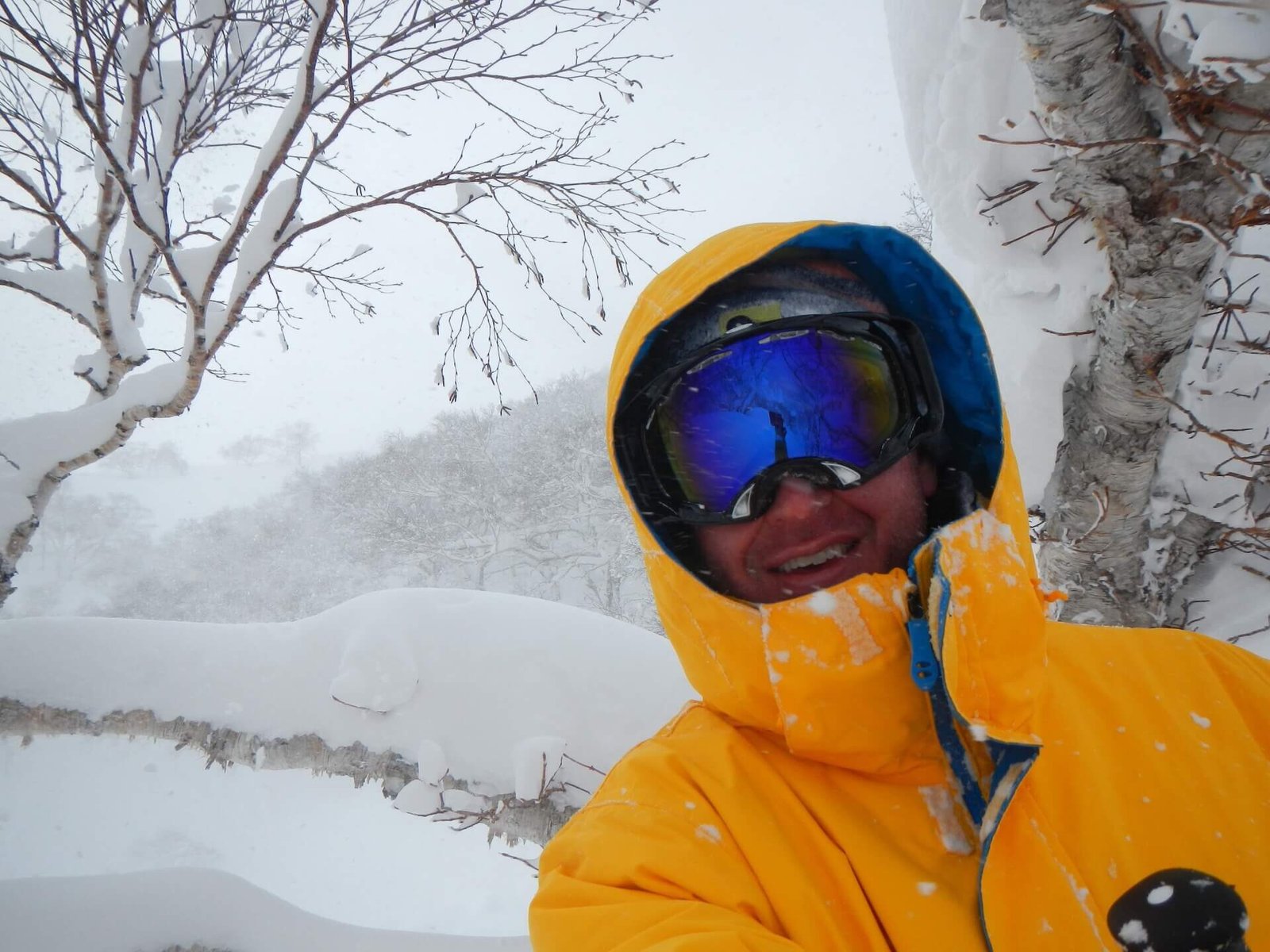
There are more crowds, more luxury, and a lot more logistics. At the same time, there are better shuttles, more lodging options, and new ways to chase the Japow dream if you go in with the right expectations.
In this post, I’ll break down what I learned on my return to Niseko and my first time riding Rusutsu. I’ll cover what things actually cost, where we stayed, how the conditions compared, whether powder skis are worth it (they are), and what surprised me most about skiing Hokkaido in 2025.
If you’re planning your first Japan ski trip or your first one since the pre-COVID days, this guide will help you set realistic expectations and navigate the evolving Japow experience.
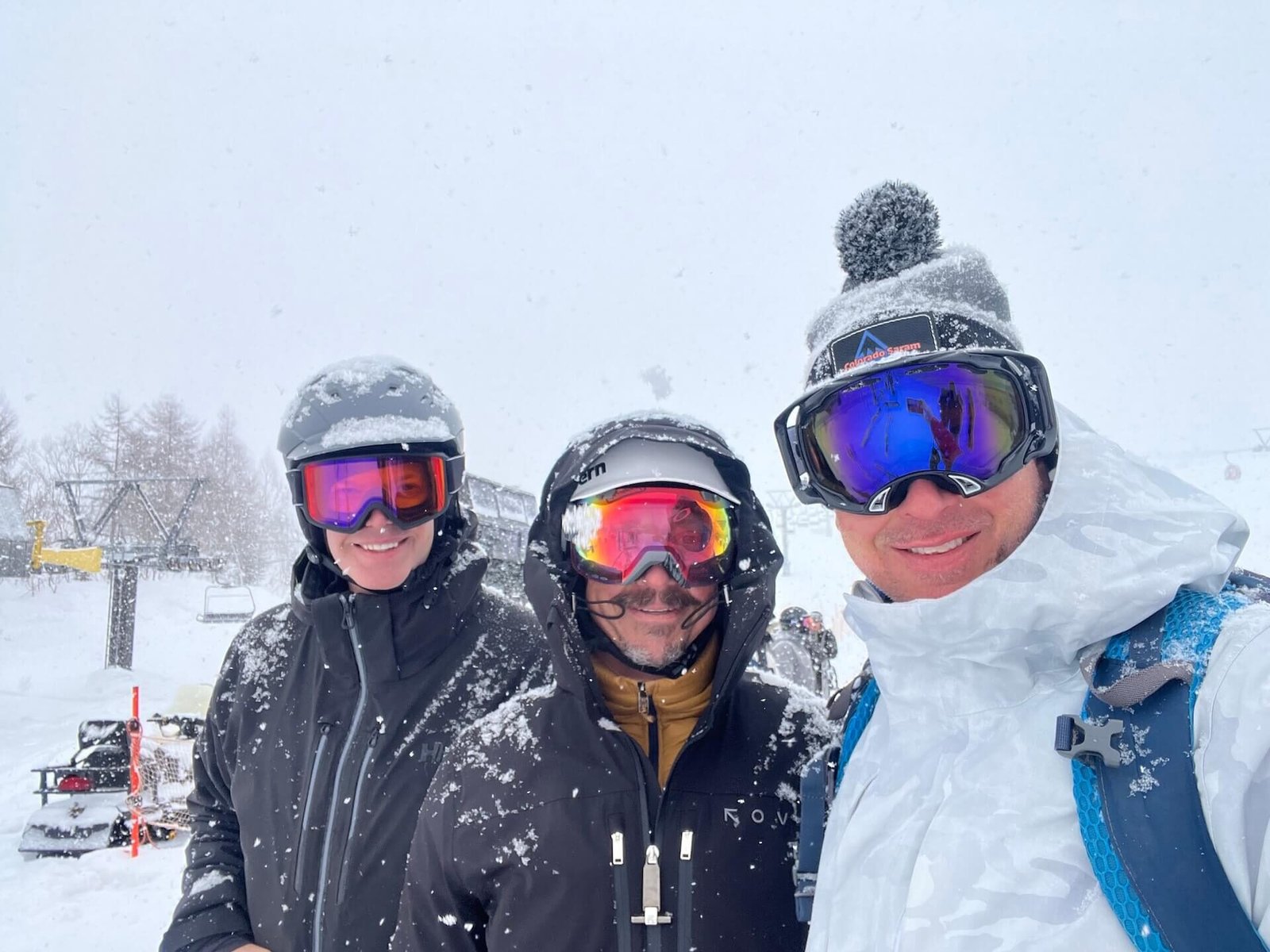
❄️ What Makes Hokkaido Snow So Special? (And Do You Really Need Powder Skis?)
The snow in Hokkaido is famous for a reason. If you’ve ever wondered how the “Japow” legend got so big, here’s why it lives up to the hype.
Cold, dry Siberian winds blow across the Sea of Japan, picking up moisture and dropping it in bottomless waves across Hokkaido’s mountains. This lake-effect setup delivers dry, light snow almost daily, and in serious volume.
Resorts like Niseko and Rusutsu average 12 to 15 meters of snowfall each season. In strong La Niña years (like 2025), totals can climb even higher.
📆 My 2014 vs. 2025 Experience
In 2014, it snowed every single day of my trip. Big, fluffy flakes. Easy foot-plus powder days, daily. My legs were actually begging for a break. I even took an afternoon off just to soak in an onsen because I was so wrecked from nonstop powder laps.
In 2025, Hokkaido had another big season overall, but our timing wasn’t quite as ideal. We scored a couple of solid powder days, but one storm was followed by a surprise warm-up that glazed the base for about 36 hours. That freeze-thaw cycle created a crusty underlayer before fresh snow filled things back in.
So yes, the goods were still there, but not quite as epic as my first trip. That said, even the “off” days were better than the best days in South Korea, where I live and ski most often now.
🎿 Powder Skis: Recommended, Not Required
Do you need powder skis in Hokkaido? It really depends on your ability level. They’re not easy to handle for beginners or intermediates, especially if you’re sticking to the main trails. But should you seriously consider them? Definitely, especially if you want to make the most of a good snow cycle.
I’ve been riding powder skis in all kinds of conditions since the early 2000s, so I’m biased. But even for less experienced skiers, wider all-mountain setups can make a big difference on storm days. Fortunately, Japan’s rental shops are dialed in, and I highly recommend Rhythm Japan.
I rented from Rhythm on both trips. In 2014, I went with my old favorites, the K2 Pontoons. In 2025, I picked up a pair of the updated version: the K2 Reckoners. I went with the 188s, which are longer than most people would choose, but the tech didn’t blink when I asked for them. They handled beautifully in the trees and sidecountry.
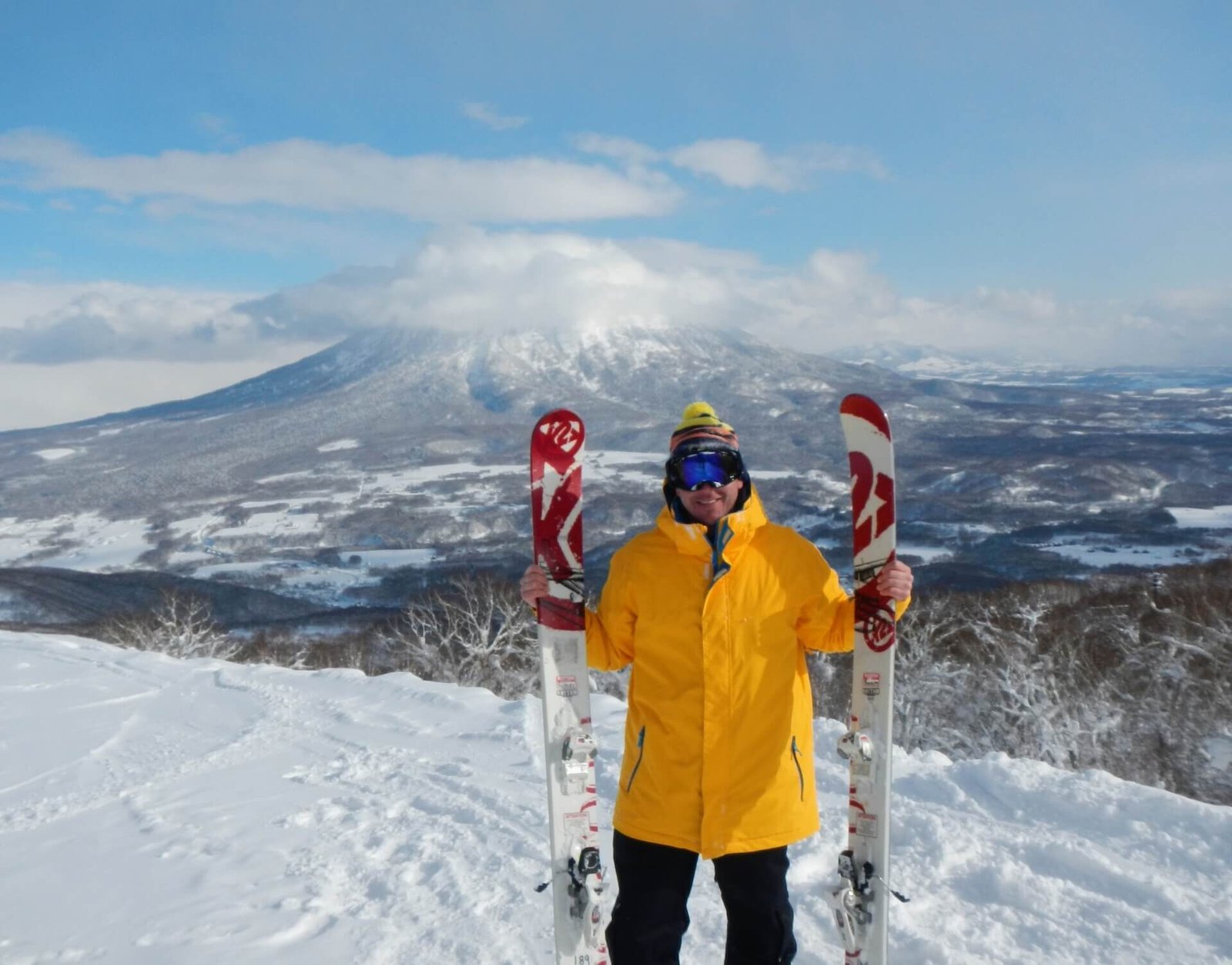
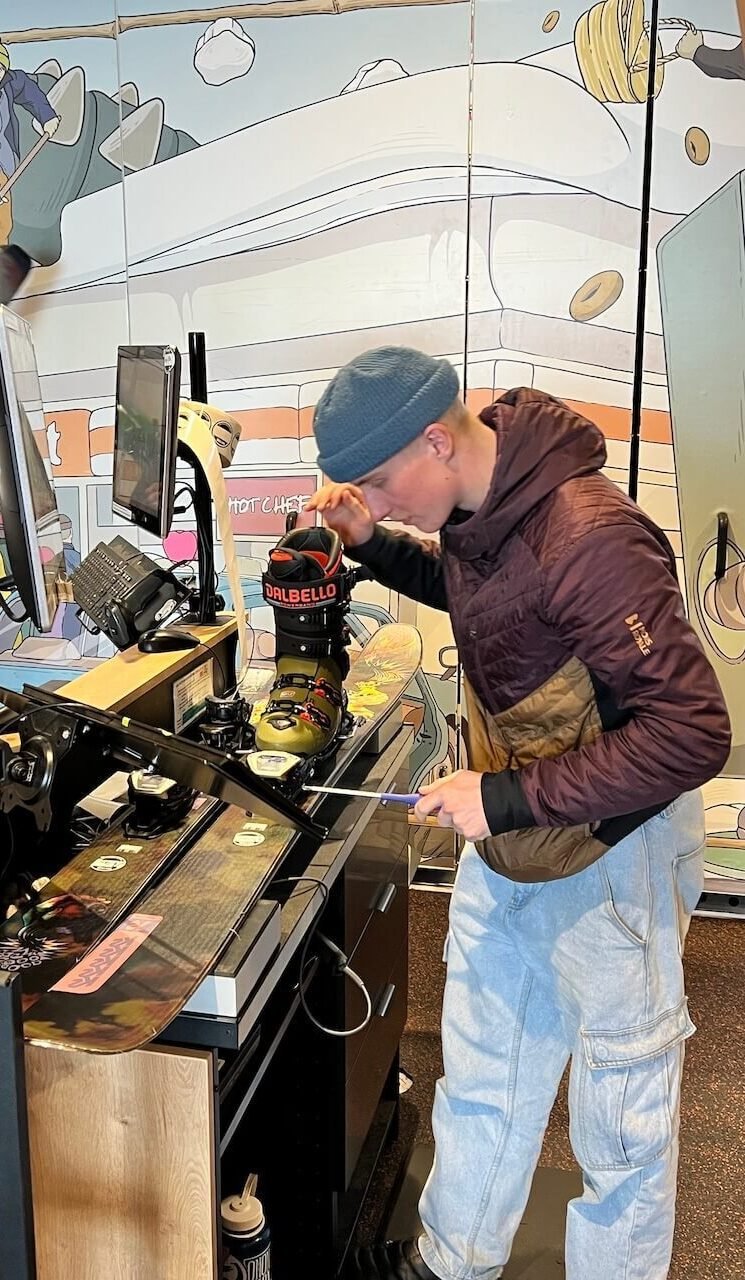
I also saw plenty of beginners and intermediates getting matched with gear that suited their ability and goals. Whether you ski or board, Rhythm has you covered, from top-tier powder rigs to more forgiving setups.
👉 Browse rental options and reserve your gear through Klook’s Rhythm Japan listing before your trip.
🌲 Terrain Tips: Tree Skiing, Sidecountry, and Storm Day Strategy
One of the standout features at both Niseko and Rusutsu is the tree skiing. The terrain feels different from Colorado, mostly because of the trees themselves.
The forests are filled with Japanese white birch and other native hardwoods. They tend to grow farther apart than evergreens, which means more open lines through the glades. But watch for low branches. They’re wide, sometimes eye-level, and can sneak up on you fast.
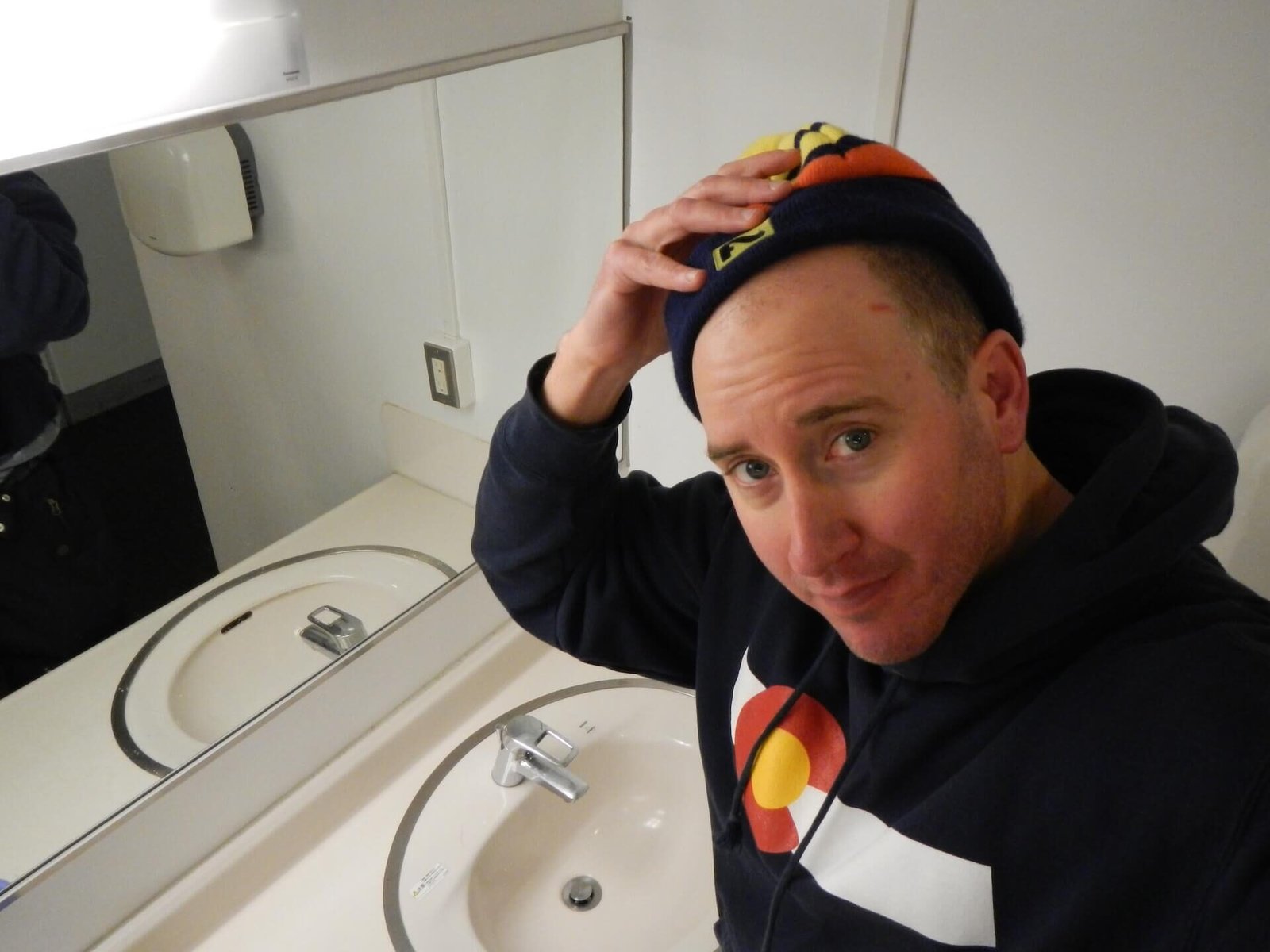
Rusutsu felt made for tree skiing. We hit it on a storm morning and, aside from one base area bottleneck, it was fresh tracks all morning. The terrain spreads out quickly, and once you clear the first lift or two, you get access to glades, mellow steeps, and natural flow lines.
Niseko is better known for sidecountry access, especially when the gates open. But there’s a catch. High winds often shut down the top lifts. That happened during our first couple of days in 2025. When they finally opened, it was like watching ants pour out of the lift line and swarm the ridge. Still amazing, still worth it, but definitely more competitive than it used to be.
📌 Pro tip: Keep an eye on the lift status boards and snow reports. If the gates open, get there early and be ready. You won’t be the only one with that plan.
Check the trail map below for gate locations and access points.
🚗 Car Rental vs. Trains: How to Get Around Hokkaido in Winter
Getting around Hokkaido used to feel like a logistical puzzle, especially if you wanted to ski more than one resort. I’ve done it two different ways: once in 2014 without a car, and again in 2025 with one. After both trips, I can confidently say that renting a car gives you way more freedom, especially if you’re planning to ski both Niseko and Rusutsu.
We picked up our rental at New Chitose Airport after flying in from different corners of the globe. I came in from Korea, where I live and work. My brother and his friend flew in from Denver. Rather than white-knuckle it on snowy roads at night, we booked a room at the Airport Terminal Hotel, right inside CTS. Nothing fancy, but a smart move after a long travel day. We hit the road early the next morning, rested and ready.
🛞 Winter Driving Tips from Experience
Driving in Hokkaido comes with a bit of a learning curve, especially if you’re not used to the left side of the road or navigating through whiteout conditions. That said, it’s totally doable, even in mid-winter.
Roads are well maintained, most rentals come with snow tires, and traffic is light once you’re outside the cities. The left-side driving adjustment is real, though. Snowbanks can hide the shoulders, and your passenger might think you’re hugging the edge. For the record, we were just fine, though I may have been in the minority with that opinion.
You’ll need an International Driving Permit (IDP) to legally drive in Japan. I picked mine up easily in Korea. My brother and his friend didn’t, despite my instructions to stop by AAA before flying out. So I ended up as the designated driver for the entire trip. I didn’t mind, aside from the backseat commentary from the guys without permits.
We rented a Nissan X-Trail SUV through EconomyBookings.com, and I’d absolutely go that route again. The AWD handled great on snowy mountain roads and had enough space for all our ski and snowboard gear. You could get by with something smaller if you’re staying put and not hauling equipment, but we saw a few compact rentals struggling in deeper snow and icy parking lots.
If you’re comparing options, DiscoverCars is another good platform to check AWD availability. Either way, make sure your vehicle is winter-ready. And don’t forget a snow brush or scraper. Your car will be buried in the mornings.
📹 Packing the X-Trail for Rusutsu
🚆 Train + Shuttle: The No-Driving Option
If driving on the left in snowy conditions sounds like more stress than it’s worth, public transport is a perfectly solid Plan B, especially if you’re just skiing Niseko.
You can take the train from New Chitose to Kutchan Station (about 2.5 hours), then hop in a taxi or local shuttle. Or skip the transfers and book a direct resort shuttle. Several bus lines run between the airport and major ski areas, including Niseko and Rusutsu.
That said, going car-free does limit your flexibility. You’ll be more locked into your base area, which is fine for a relaxed trip or first-time visitor. But if you’re hoping to chase storms or escape weekend lift lines, having your own wheels opens up way more options.
👉 Browse Klook’s Hokkaido transport listings for trains, ski shuttles, and rental cars all in one place.
🏔️ Niseko in 2025: Still Worth It?
Niseko has definitely evolved since my first visit in 2014. Back then, it felt like one of those far-flung places you’d read about in ski magazines. It was still under the radar for most Americans, though already popular with Aussies and Kiwis looking to trade summer for a powder-filled winter escape.
I stayed in a budget hostel, skied solo, and had no trouble getting around. The scene was more laid-back and felt less trend-driven than what you’ll find today.
By 2025, things had changed. Niseko had grown into a full-fledged international destination, with visitors from all over the world and a noticeable shift toward higher-end infrastructure, upscale lodging, and a need to plan ahead for everything from gear rentals to dinner reservations.
That doesn’t mean it’s lost its charm or that budget-friendly options no longer exist. But around the more developed areas like Hirafu, the vibe feels much closer to a Western-style resort. If you’ve skied places like Vail or Aspen, parts of Niseko will feel familiar, just with a distinctly Japanese twist.
For some, that shift brings comfort and convenience. For others, especially those looking for a quieter or more off-the-grid experience, it’s a good reminder to manage expectations and plan ahead.
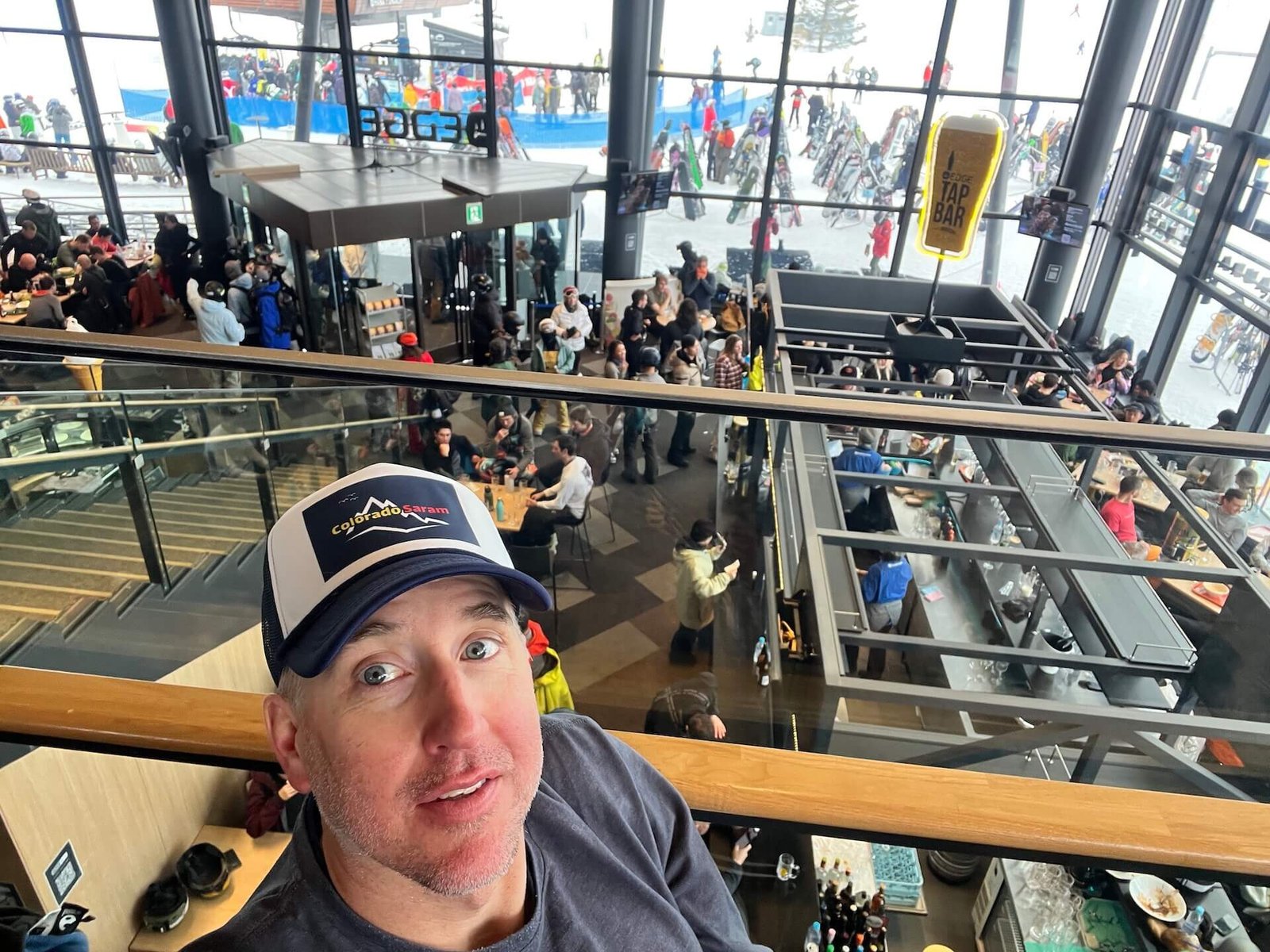
📲 Reservations Required
If I had to give one important tip for Niseko, it would be this: plan your meals ahead of time, especially dinners. Even lunch can be tricky if you’re not eating on-mountain.
Nearly every popular restaurant now uses TableCheck, and walk-ins can be tough, sometimes impossible, during peak season. I recommend reserving at least a few meals before you arrive, especially if you’re in a group or aiming for a well-known spot. TableCheck works well in English and makes it easy to book online.
I’ll admit, this caught me off guard as the unofficial trip planner. Most nights, we were scrambling to find places that would take us last-minute. For many spots, three days’ notice seemed like the minimum.
We still found a few solid casual options. Rookies Kitchen and Gate Zero Tap Room, both in Annupuri, came through. But I definitely wished I had reserved more in advance.
⛷️ Ikon and Epic Pass Access
I don’t have hard data to prove it, but as a Colorado native, I’d bet a big part of the recent influx of North American skiers is thanks to Japan’s inclusion in the multi-resort pass scene. The Ikon, Epic, and even Indy Pass now offer access to Japanese resorts, making it far more appealing and financially accessible for international travelers.
If you’re holding an Ikon Pass, Niseko United is the main partner resort. Access is typically limited to five or seven days, depending on your tier, and you’ll need to pre-register your trip through the Ikon Pass portal before you arrive. Not all Niseko base areas honor Ikon, so double-check where your pass is valid.
Rusutsu, on the other hand, is part of the Epic Pass network. One of our group used his Epic Pass there without any issues. As always, it’s smart to review the current season’s blackout dates, restrictions, and redemption process before locking in your plans.
These pass partnerships have made skiing in Japan more accessible to a global audience. They’re a great option for experienced skiers who already base their season around pass access. At the same time, they’ve added to the competition for powder days, especially during peak season.
👉 Want a deeper dive into how the resorts compare? Check out my Niseko vs. Rusutsu breakdown.
⚠️ How to Avoid the Worst of the Crowds
Lift lines in Niseko have grown, especially on storm days when wind or avalanche control closes upper lifts. Crowds often funnel into the same base areas once lifts start spinning.
To avoid the worst of it, start your day early or ski later in the afternoon. Consider launching from one of the quieter zones like Annupuri or Niseko Village. These areas usually have lighter morning traffic compared to busy Hirafu.
The upper zones of Niseko United are highly exposed, and the summit lifts, particularly the ones that serve the sidecountry gates, are often shut down during high winds. When they reopen, the rush can be intense.
Annupuri is a smart play on those days. It tends to stay open more consistently thanks to lower elevation and less wind exposure. Its gates also sit lower than those on the Hanazono or Hirafu side, making it one of the better options for sidecountry access when upper lifts are still on hold.
Talking to locals can make a big difference, too. My contact at Rhythm Japan shared real-time tips over WhatsApp about where to go based on conditions. That kind of intel helped us dodge bottlenecks and find fresh lines, even on busy days.
🗺️ Niseko United Trail Map
🎥 Powder Day Crowds at Niseko
Here’s a quick video showing the post-storm madness. King Lift #4 was packed, and you can see a long line of skiers heading for the G5 gate after multiple wind hold days.
🗻 Rusutsu: A Welcome Addition to my Japow Search
I skipped Rusutsu on my first Japan trip in 2014. At the time, it wasn’t on my radar. I assumed it was smaller, harder to reach, and maybe not worth the effort when Niseko already had so much to offer.
That assumption didn’t hold up in 2025.
This time around, we had a rental car, a more flexible itinerary, and a strong local recommendation to give Rusutsu a shot. It ended up being one of the best decisions of the trip. With the same legendary powder and fewer people competing for it, Rusutsu delivered long, quiet tree runs and a low-key energy that reminded me of some of my favorite Colorado resorts.
Rusutsu turned out to be the perfect complement to Niseko. If you’re looking to mix things up with quieter slopes and equally deep snow, it’s definitely worth adding to your list.
🕰️ Why I Skipped It in 2014
Back on that first trip, I was focused on figuring out Niseko. Rusutsu seemed like an unknown. I didn’t have a car, and I assumed it would be a hassle to get to. I chalked it up as a “maybe next time” destination and kept things simple.
That was a mistake in hindsight.
🏔️ What Makes Rusutsu Different
Rusutsu ended up being one of the highlights of our 2025 trip. It had the same deep powder, but with far fewer people. Even on busy days, we found fresh lines hours after the lifts opened.
The terrain is spread across three mountains: West Mountain, East Mountain, and Mount Isola. There’s a fun mix of glades, steeps, and longer cruisers. It also seemed to hold snow longer after a storm compared to Niseko.
While Niseko is starting to feel like a full-on resort town with international buzz, Rusutsu still has a laid-back, powder-first vibe. If Niseko felt like Vail, Rusutsu was more like Steamboat. Still awesome, just with less glitz and more time on snow.
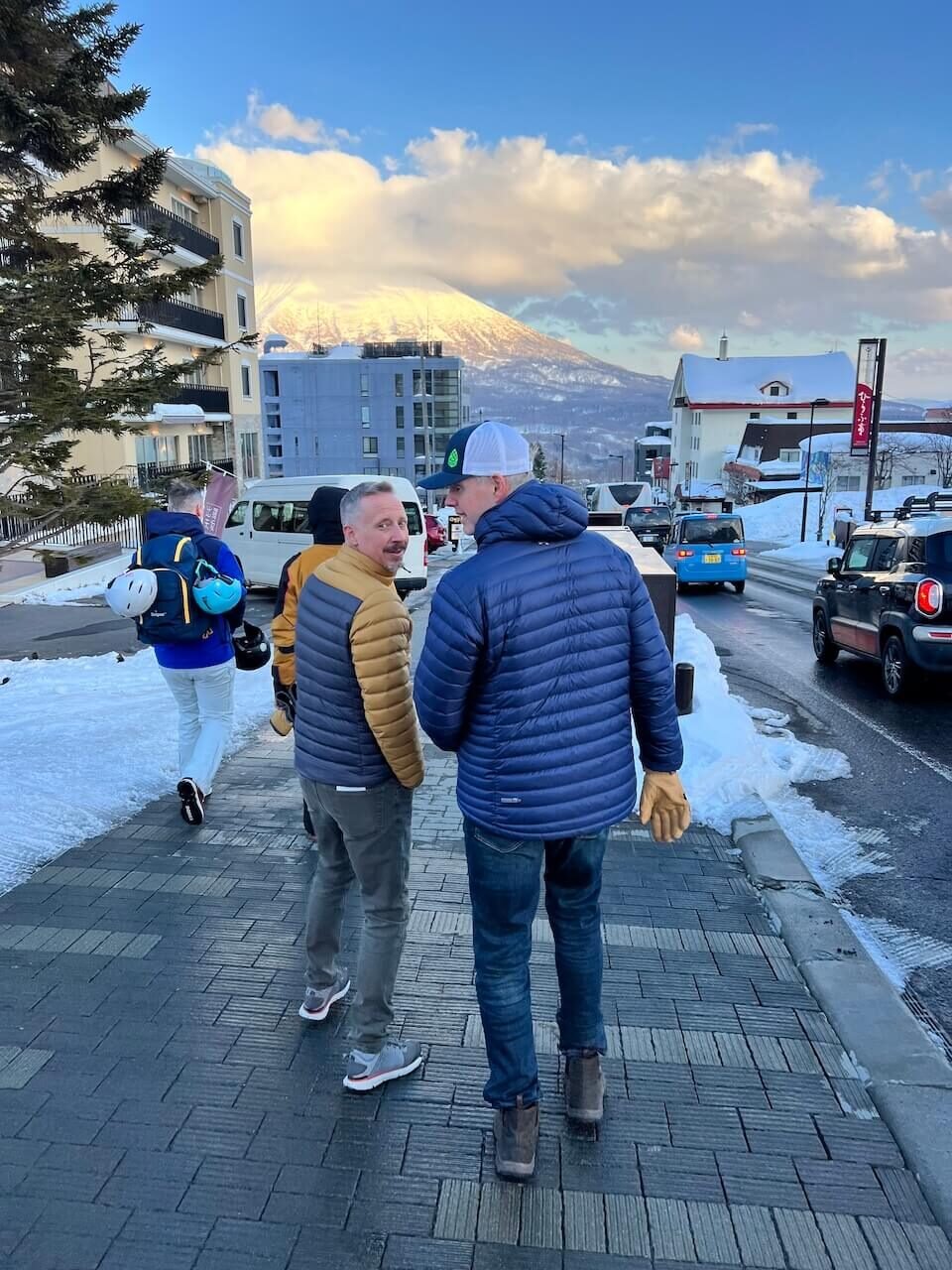
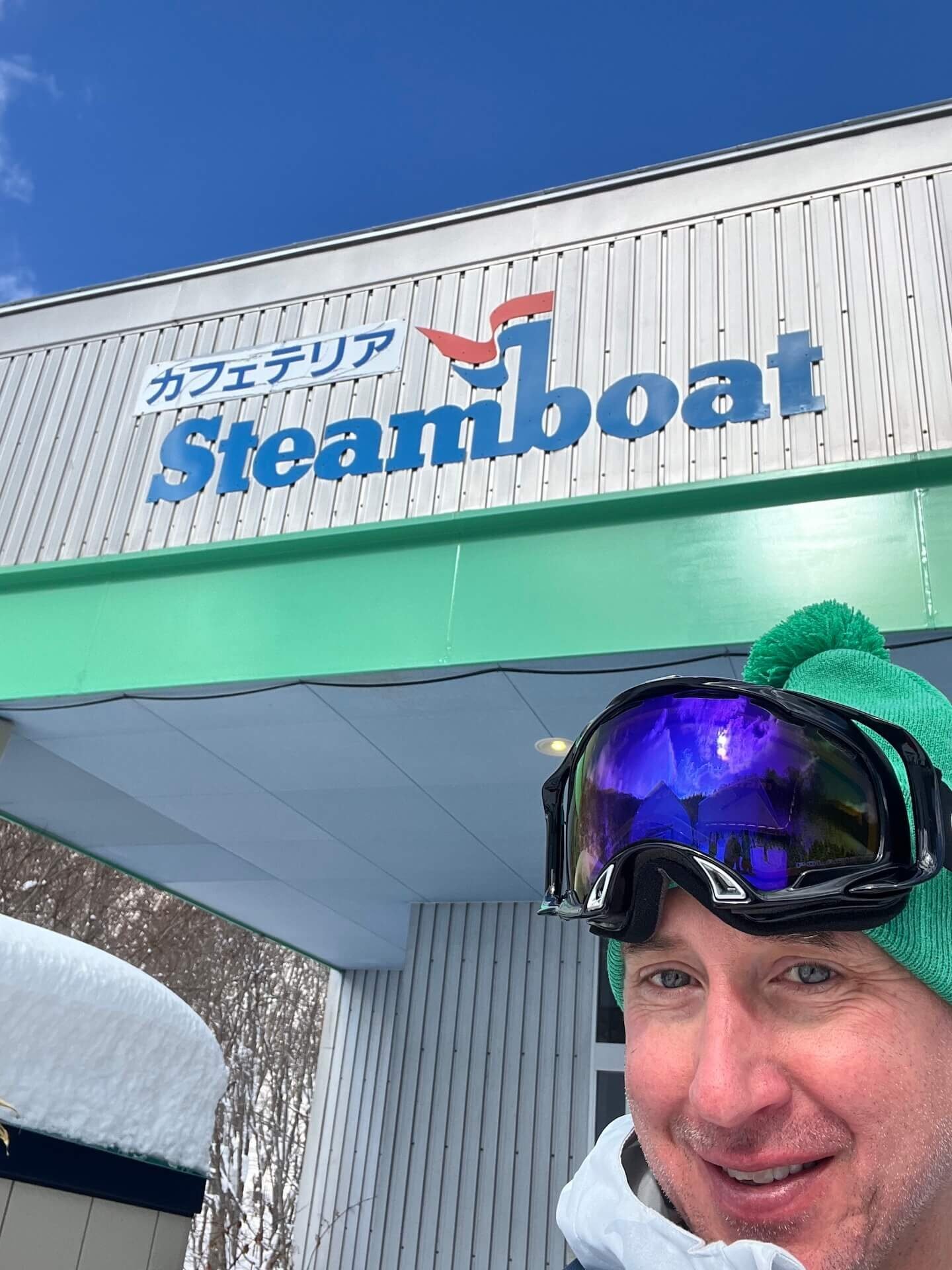
🍺 Less Nightlife, More Laps
Rusutsu doesn’t have much of an après scene. There are a few restaurants and low-key bars, but nothing close to the energy of Hirafu. For us, that wasn’t a problem. With fewer distractions and smaller crowds, we ended up skiing more and resting better. It felt like a throwback to ski trips where the focus stayed on the mountain.
👨👩👧👦 Who Rusutsu Is Best For
Rusutsu is a great pick for return visitors to Japan, powder-focused riders, or anyone who prefers quieter mountains over buzzing resort villages. It’s also a strong choice for families, thanks to its mellow base area and easy-to-navigate layout.
If you’re planning your first Japow adventure, Niseko probably still makes sense as your home base. But if you can work Rusutsu into the mix, I’d highly recommend it. Just make sure you’ve got a rental car and a flexible plan so you can chase the snow wherever it falls.
🗺️ Rusutsu Trail Map
🎥 Rusutsu in a Day
This short montage kicks off with the morning rush at the base lift, then rides the East Quad up into bluebird skies. From there, it’s powder turns through the trees and snowfall back at the base by late afternoon. Classic Rusutsu, all in one day.
💴 What Japow Actually Costs in 2025 (Real Numbers from My Trip)
If you’re planning a ski trip to Hokkaido in 2025, here’s a breakdown of what I actually spent. These numbers come from my own receipts, and in a few cases, they’re approximations based on our February 2025 itinerary.
Prices may vary depending on where you stay and how early you book. There’s also been talk that Japan could start charging higher rates for international visitors at popular destinations, so it’s worth keeping an eye on that. But if you’re planning a flexible, mid-range Japow trip, this should give you a solid starting point.
My brother and his friend flew in from Denver, while I came over from Korea. We split most of the big-ticket expenses. We weren’t pinching pennies like I was in 2014, but we weren’t splurging at the Park Hyatt either.
🧾 Sample Budget Breakdown
| Category | Cost | Notes |
|---|---|---|
| Flights | $600–$1,400 | Varies by origin. DEN to CTS averaged ~$1,100–$1,300. Shop early for the best deals. |
| Lodging | $750–$900 | Airbnb near Annupuri for 4 nights (~$2,400 total), split between 3 people. Lots of options at various price points. |
| Rental Car | $600–$800 | Nissan X-Trail with snow tires, GPS, and full coverage. Booked through EconomyBookings.com. Great for flexibility and chasing snow. |
| Gas | $100 | Two full tanks for a week of driving. Expect some fluctuation based on driving distance and fuel rates. |
| Lift Tickets | $325–$375 | 4-day estimate. Niseko: ¥10,500/day. Rusutsu: ¥11,200/day. Ikon valid at Niseko, Epic at Rusutsu. Check for blackout dates and redemption rules. |
| Ski Rentals | ~$240 | Premium powder gear from Rhythm Japan (skis, boots, poles). ¥24,000 for 3–4 days. Slight variation by location and season. |
| Food | $200–$275 | Combini breakfasts, slope-side lunches, and casual dinners. Add more if you’re going upscale or enjoying drinks. |
| Misc. / Souvenirs | $50–$100 | Small purchases like onsen visits, snacks, coffee, or souvenirs. |
| Estimated Total | $2,300–$3,300 | Per person, assuming shared lodging and vehicle costs. Use this as a flexible mid-range benchmark. |
Note: Costs are approximate and based on a February 2025 trip. Shared expenses are split between three people. Always check current exchange rates and book early for the best rates.
📊 Rough Per-Person Estimate
Based on our 2025 trip, here’s a general breakdown of what a week of Japow might cost per person, depending on group size:
- Solo traveler: $2,700–$3,400+
- Two people sharing: $2,400–$3,100 each
- Group of three: $1,900–$2,500 each
These estimates are in USD and will vary depending on your departure location, how you book lodging and gear, and whether you’re splitting larger expenses. If you’re planning a flexible, mid-range ski trip to Hokkaido, this should give you a helpful starting point.
If you’re coming from outside the U.S., be sure to calculate the costs in your own currency.
💡 Cost Notes & Takeaways
Lodging:
We stayed in a cozy Airbnb (unaffiliated link to where we stayed) on the Annupuri side. It wasn’t ski-in/ski-out, but it was a short drive to the lifts and far more affordable than staying in Hirafu. My brother booked the place for four nights at just under $2,400 total. My share came out to around $800, which I offset by covering the rental car.
Airport Hotel:
After landing late at CTS, we spent the night at the Air Terminal Hotel (about ¥15,000 per person). It wasn’t glamorous, but it was absolutely worth avoiding a late-night drive in winter conditions.
Rental Gear:
We used Rhythm Japan’s premium package (skis, boots, and poles). Rates were ¥8,000 per day or ¥24,000 for three days (about $160–$170 USD). I went with the K2 Reckoners, extended for an extra day, and paid the difference in cash when returning the gear. Rhythm also rents outerwear and avalanche safety equipment, which is handy if you’re packing light.
Lift Tickets:
We booked both sets of lift passes online. Rusutsu was ¥11,200 for a full day, and Niseko United was ¥10,500. Both were easy to pick up at base-area kiosks. Prices may shift for the 2025–26 season. If you’re using an Ikon or Epic Pass, be sure to check what access is included before buying day tickets.
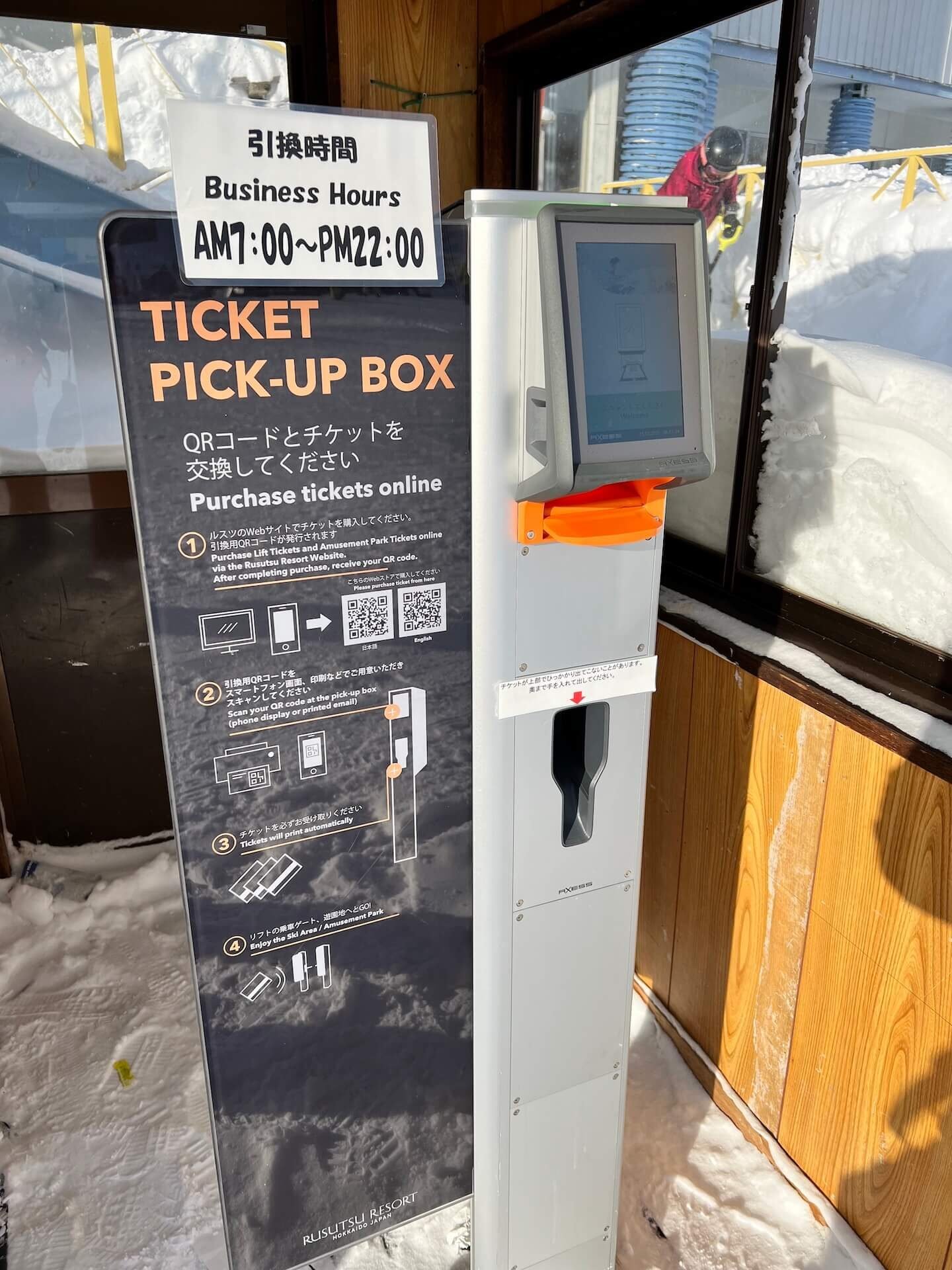
Car Rental:
We booked a Nissan X-Trail via EconomyBookings.com. It came with snow tires, GPS, and full insurance. The total was ¥92,367 (around $800). Not exactly cheap, but no regrets as it gave us the flexibility to chase storms and avoid crowds.
Gas:
We filled up twice during the trip. Total cost came out to about $100.
Food:
This was harder to pin down. My brother and his friend covered many of the dinners. Combini breakfasts ran about ¥600–¥800, lunches were usually under ¥1,500, and dinners ranged widely. Rookie’s Kitchen was a favorite and worth checking out.
🛌 Where to Stay: Niseko vs. Rusutsu (And a Nod to Furano)
Where you stay in Hokkaido can shape everything from your morning routine to your budget and even how much terrain you can cover. For our 2025 trip, we chose an Airbnb on the Annupuri side, which gave us privacy, space, and a solid value. It only worked, though, because we had a rental car.
Whether you’re traveling solo or with a crew, there’s a wide range of lodging styles across Niseko, Rusutsu, and even Sapporo, each with their own trade-offs.
🏔️ Niseko: Big Options, Bigger Range
Niseko has the broadest selection of lodging in Hokkaido. You’ll find everything from hostels and boutique hotels to luxury ski-in/ski-out suites with private onsens.
We stayed just outside of central Niseko in a cozy Airbnb, which worked well for our small group. It wasn’t ski-in/ski-out, and it wouldn’t have worked without a car. But for travelers who don’t need to be in the middle of the Hirafu buzz, Airbnb or VRBO properties can be a great way to get more space and save money, especially if you’re splitting costs with friends or family.
If you’re looking to be closer to the action, Hirafu is the center of it all with lift access, restaurants, bars, and après within walking distance. It’s also the most expensive and crowded area. Annupuri, where we based ourselves, is much quieter. There are fewer food options, but also fewer lift lines.
For a luxury experience, there’s no shortage of big-name resorts:
- Park Hyatt Hanazono – Premium resort at the base of Hanazono with ski valet, upscale dining, and large suites.
- Higashiyama Niseko Village (Ritz-Carlton Reserve) – Elegant, modern, and tucked away from the noise.
- The Vale Niseko – Sleek, well-located in Hirafu, with heated pools and slope access.
If you’re not looking to spend quite that much, these mid-range options balance comfort and convenience:
- Always Niseko – Boutique vibe with reliable shuttle service to the slopes.
- The Green Leaf Niseko Village – Ski-in/ski-out access, onsen, and a cozy resort feel without the premium pricing.
For budget-conscious travelers:
- My Ecolodge – Clean, social hostel-style lodging with shuttle access.
- Hostelworld’s Niseko listings – A wide range of shared accommodations and ski lodges across the area.
In Asia, Agoda is one of the most popular hotel booking engines, so it’s worth a look and a price comparison:
🎿 Rusutsu: More Chill, Still Connected
Rusutsu is smaller than Niseko in both resort size and lodging options, but it still has a few standout places to stay. We skied it as a day trip from Niseko and didn’t stay overnight, but the layout is pretty easy to grasp.
The main village is centered around two big properties:
- The Westin Rusutsu Resort – The largest and most visible resort hotel in town with ski-in/ski-out access, spacious rooms, restaurants, and everything under one roof.
- The Vale Rusutsu – Sleek, apartment-style units with modern design and slope access. A quieter, more private option compared to the Westin.
We didn’t go inside either hotel, but they dominate the resort village. One interesting detail is that there’s a full amusement park near the hotel area, complete with a ferris wheel and roller coasters. No idea if it operates in winter, but it’s definitely a unique feature. That part of the resort is somewhat separated from the main ski areas, but it’s connected by gondola.
If you prefer vacation rentals, there are VRBO-style cabins and houses scattered around the area. Just keep in mind that some of them are located farther out, and you may need a car or shuttle service to reach the slopes.
🧳 Sapporo: Not a Focus, but Worth a Stop
We stayed at two different hotels in Sapporo — one on arrival and one before departure — and both were worth recommending.
The Air Terminal Hotel, located right inside New Chitose Airport, made a perfect rallying point after long international flights. We landed late, got some rest, and hit the road early the next morning. We still made it in time for a half-day on the mountain before checking into our Airbnb.
On the way out, we stayed at the Susukino Granbell Hotel in downtown Sapporo. It was clean, well-located, and ideal for one last night in the city. Just remember that Sapporo is about an hour from the airport, so factor that into your return day plans. It’s a cool place to explore for a day or two, but I wouldn’t build an entire ski trip around the city.
🌲 What About Furano?
We didn’t visit Furano on this trip, but it’s on my radar for next time. It’s located farther inland, tends to be colder, and generally sees lighter, drier snow. From what I’ve heard and read, it’s less developed and more low-key than Niseko or Rusutsu. If you’re looking for a more local vibe with fewer international crowds, Furano might be a solid next stop.
I’ve been asked if it’s a doable day-trip from Niseko, and I’ll be honest, the Hokkaido winter roads are no joke, and it’s a 3 hour+ drive. So, if it were me, I’d likely plan on spending the night if I were to tack Furano onto a Niseko trip.
💡 If I Were Planning a First Trip Today…
I’d aim for 3 or 4 days in Niseko (probably staying outside of Hirafu) followed by 2 or 3 days in Rusutsu for a change of pace and fewer crowds. A rental car makes a big difference. It gives you access to better lodging options and the flexibility to chase snow. If it’s a return trip or you want to avoid the resort scene altogether, Furano would be worth exploring.
♨️ Don’t Skip the Onsen: It’s Half the Experience
If you’re planning a ski trip to Japan and haven’t experienced an onsen yet, don’t skip it. After a storm day in deep Japow, soaking in a natural hot spring is about as good as it gets. Your legs will thank you, and it’s one of the best ways to experience a uniquely Japanese tradition.
I didn’t make it to an onsen on our 2025 trip since we stayed a bit outside of town and were focused on early starts and chasing snow. But back in 2014, I visited a public onsen after several days on the mountain, and it made a lasting impression. No photos (you’re required to be fully nude), but the full-body reset that comes from sliding into steaming water after skiing powder all day is something I still remember clearly.
📌 First Time at an Onsen? Here’s What to Know
- You’ll be nude. No swimsuits allowed. You get a small towel, but it stays out of the water.
- Shower before entering. Sit at the wash station and scrub thoroughly.
- Keep it quiet. No phones, no loud voices. Treat it like a spa, not a pool party.
- Hair up, towel out. Don’t let hair or towels touch the water.
- Tattoos? Keep reading below for tattoo-friendly options.
🧼 Tattoo-Friendly Onsens in Niseko
Many traditional onsens still prohibit tattoos due to their association with organized crime, but a growing number of places now allow them — especially in tourist areas. Here are a few to consider:
- The Vale Niseko Onsen – Tattoo-friendly and conveniently located near Hirafu.
- Ki Niseko – Allows tattoos and offers a more modern, private onsen experience.
- Moku No Sho – A boutique ryokan-style hotel near Annupuri with a tattoo-tolerant policy.
- Yukichichibu Onsen – Located a bit farther out near Rankoshi, but welcoming to all guests (and has mud baths).
(Policies can change, so it’s worth checking with the property when you book.)
🏨 Want the Full Ryokan Experience?
If you’re looking to upgrade your trip with a luxury stay that includes a private or semi-private onsen, there are some stunning ryokan-style hotels in Hokkaido.
Here are a few standouts you can explore:
- Zaborin Ryokan (near Hanazono): Ultra-luxe villas with private indoor and outdoor onsens. Ideal for a honeymoon or once-in-a-lifetime splurge.
- Ryokan Sensyoen (Furano): Traditional rooms, excellent meals, and tattoo-friendly baths. A great option if you’re planning to add Furano to your route.
- Moku No Sho (Annupuri area): Classic Japanese vibes with cozy rooms and high-end dining.
🏔️ Beyond Niseko: Furano, Hakuba, and What’s Next
There’s a whole world of skiing beyond Niseko and Rusutsu, and more powder-hungry travelers are starting to branch out. Furano, for example, is known for its lighter crowds and famously dry central Hokkaido snow. Hakuba Valley, down on Honshu, is a collection of resorts that offer steeper terrain, a livelier town, and an active backcountry scene.
I visited the Hakuba Valley back in 2009 and would absolutely recommend it, especially if you’re planning to explore more of Japan while you’re there. Honshu simply offers more cultural depth than Hokkaido, with its historic towns, temples, and easy access to cities like Tokyo, Kyoto, and Nagano.
That said, when it comes to chasing Japow, I’m still Team Hokkaido. The snow is more consistent, logistics are simpler, and the whole experience feels more dialed in for powder-focused travel.
Next season, though, I’ll be taking things a step further. After plenty of research and internal debate, I’ve locked in plans to ski Gulmarg in Kashmir, India, one of the most remote, raw, and rewarding lift-served ski zones on the planet.
If you’re curious how I narrowed it down and why I chose to ski with Gulmarg Powder Guides in Kashmir, India despite a few risks, you can read the full story in my in-depth post.
And if you want to see how that decision came together: comparing destinations like Kashmir, Kazakhstan, Kyrgyzstan, and China, check out Beyond Japow: Exploring the Next Great Ski Destinations in Asia, where I dive into Asia’s emerging alternatives to Japan’s famous powder scene.
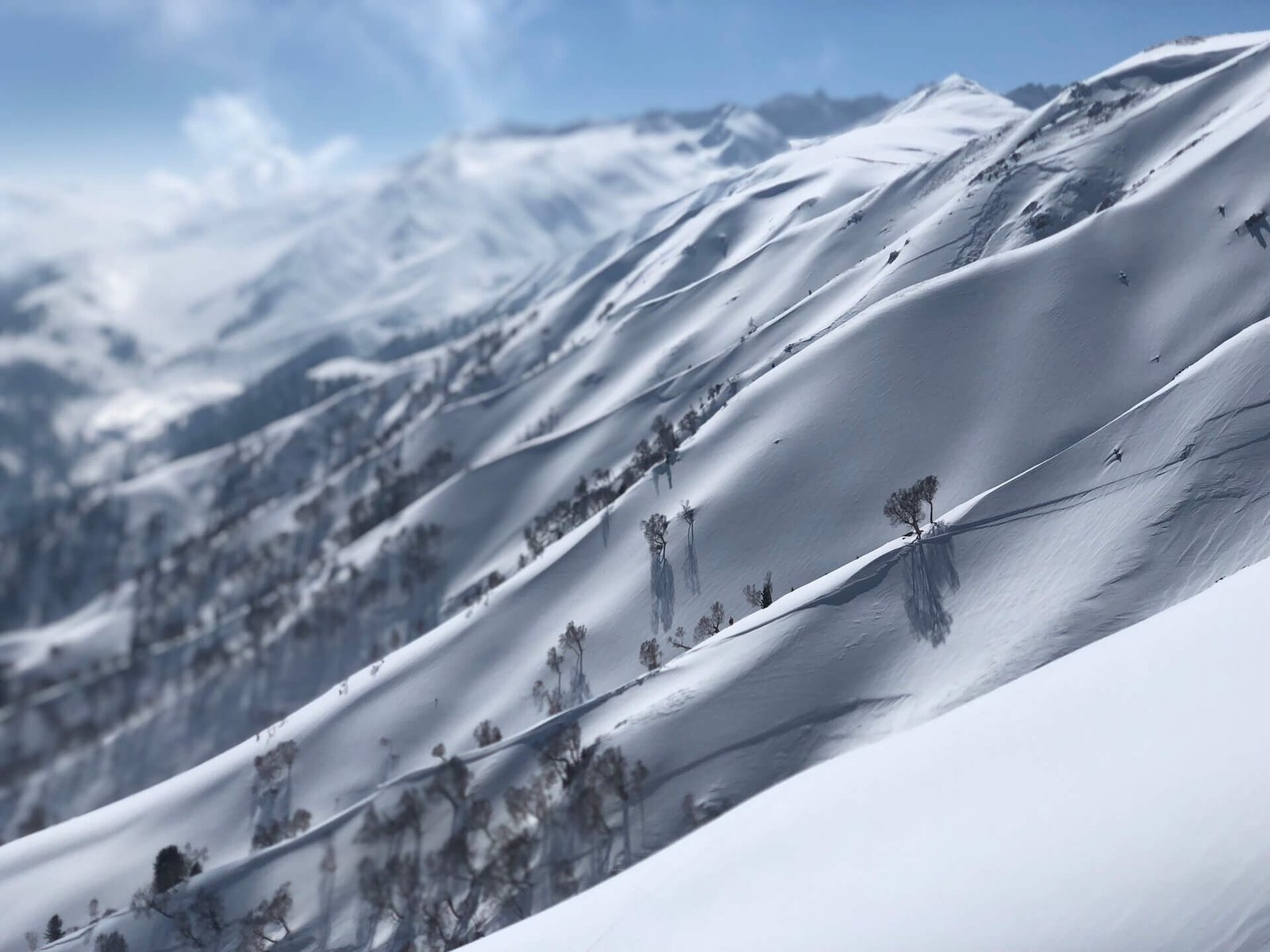
❓ Hokkaido Ski Trip FAQs
When is the best time to ski in Hokkaido for deep powder?
The most reliable powder conditions in Hokkaido typically fall between late December and mid-February. January is peak Japow season, with frequent storm cycles and deep snow, but it also draws the largest crowds. Early February is often the sweet spot for fresh snow and slightly better availability.
How much should I budget for a 5-day ski trip to Hokkaido?
For a flexible, mid-range trip, the rough per-person cost is around $1,600 to $1,900 before flights. This includes shared lodging, lift tickets, rental gear, transportation, food, and gas. Add $600 to $1,400 depending on your flight origin. Solo travelers or luxury options will push that higher.
Are Ikon or Epic Passes accepted at Niseko or Rusutsu?
Yes. Ikon Pass holders get access to Niseko United, while Epic Pass holders can ski Rusutsu. Access is limited and may include blackout dates or redemption steps, so it’s important to double-check the current terms on the Ikon and Epic sites before your trip.
Do I need a rental car to ski Niseko and Rusutsu?
If you’re staying in central Hirafu or booked at a ski-in/ski-out hotel, you can likely rely on shuttle service. But if you’re in an Airbnb outside of town, a rental car is essential. It also makes day trips to Rusutsu or other resorts much easier and gives you flexibility when chasing storms.
What’s the difference between Niseko and Rusutsu?
Niseko is larger, busier, and more developed with a wide variety of restaurants, nightlife, and lodging. Rusutsu is quieter with equally impressive snow and great terrain, but fewer crowds and less après-ski action. If Niseko feels like Vail, Rusutsu is more like Steamboat.
Are onsens really worth it if I’m only skiing for a few days?
Absolutely. Soaking in a natural hot spring after skiing is one of the most memorable parts of the Japan ski experience. Some require reservations and may not allow tattoos, but there are plenty of tattoo-friendly and drop-in options that don’t break the bank.
🎒 Stay Connected and Keep Exploring
Before wrapping up your Hokkaido ski plans, here are a few ways to connect, get help, or simply help keep the stoke alive on this blog.
🧭 Need Help Planning Your Trip?
Not sure where to stay, how to compare lift passes, or whether to rent a car? I offer free one-on-one planning support for independent travelers.
This isn’t a travel agency. It’s just me, someone who’s been there and who loves to talk travel, helping fellow snow enthusiasts sort out logistics and make smarter decisions based on real experience.
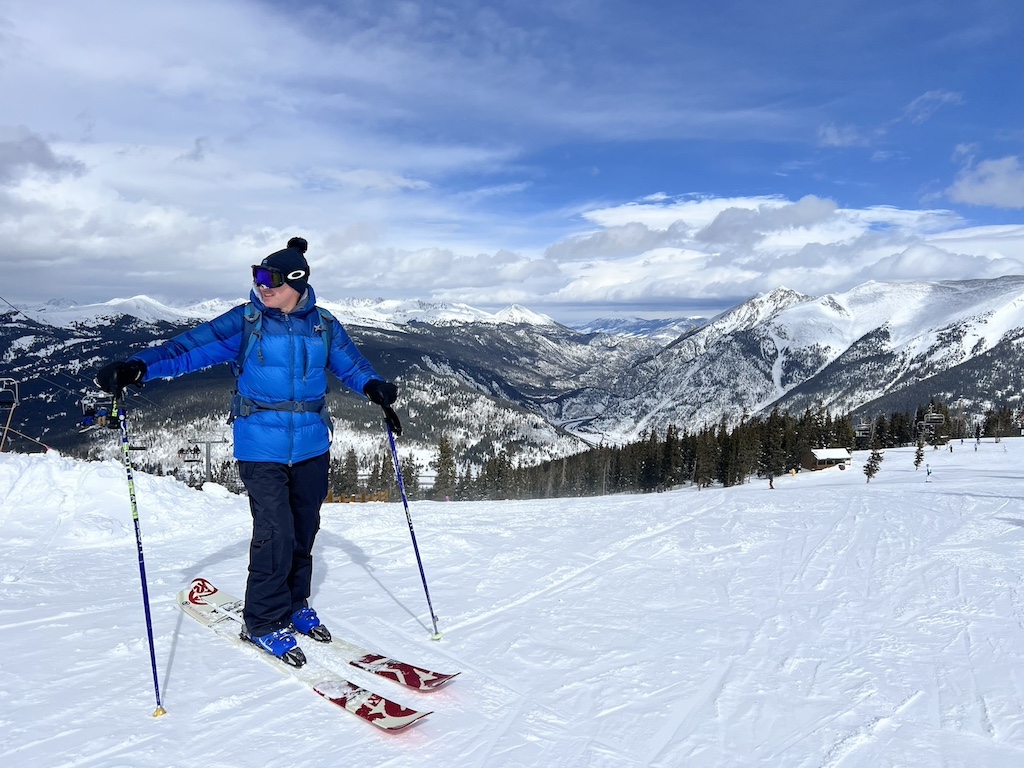
I’ve been living and traveling around Asia for more than 15 years, and I’m always happy to chat with powder-chasers, backpackers, and anyone trying to build the trip that actually works for them.
🇯🇵 Japow Apparel
During our trip, we were surprised by how hard it was to find legit ski-themed souvenirs in Niseko or Rusutsu. So I made my own.
You can browse the original Japow Apparel Collection right here on the blog. Inspired by Hokkaido’s powder and designed by someone who’s actually been there:
🙏 Support the Blog
This post isn’t sponsored by any resort, hotel, or brand. A few of the links you’ll see here are affiliate links, which means I may earn a small commission if you make a booking through them—at no extra cost to you.
If you found these Hokkaido ski tips useful and want to help keep this site alive, you can buy me a coffee or click the image below. Every bit of support helps me keep sharing firsthand travel stories, resort guides, and honest advice for skiers exploring Japan and beyond.
Ski trips aren’t cheap, and injuries, stolen gear, or trip delays can ruin a great itinerary. That’s why I always recommend travel insurance.
I use SafetyWing for flexible, affordable coverage that works well for international travel and resort skiing.
They cover emergency medical care, trip delays, and even gear protection. Recreational skiing and snowboarding at marked resorts are included under the base plan.
If you’re planning to explore sidecountry or backcountry zones, you’ll want to look into their Adventure Sports add-on or a more specialized policy. For most Japow trips, though, the standard plan is solid.
Worth it for peace of mind and your gear bag.


